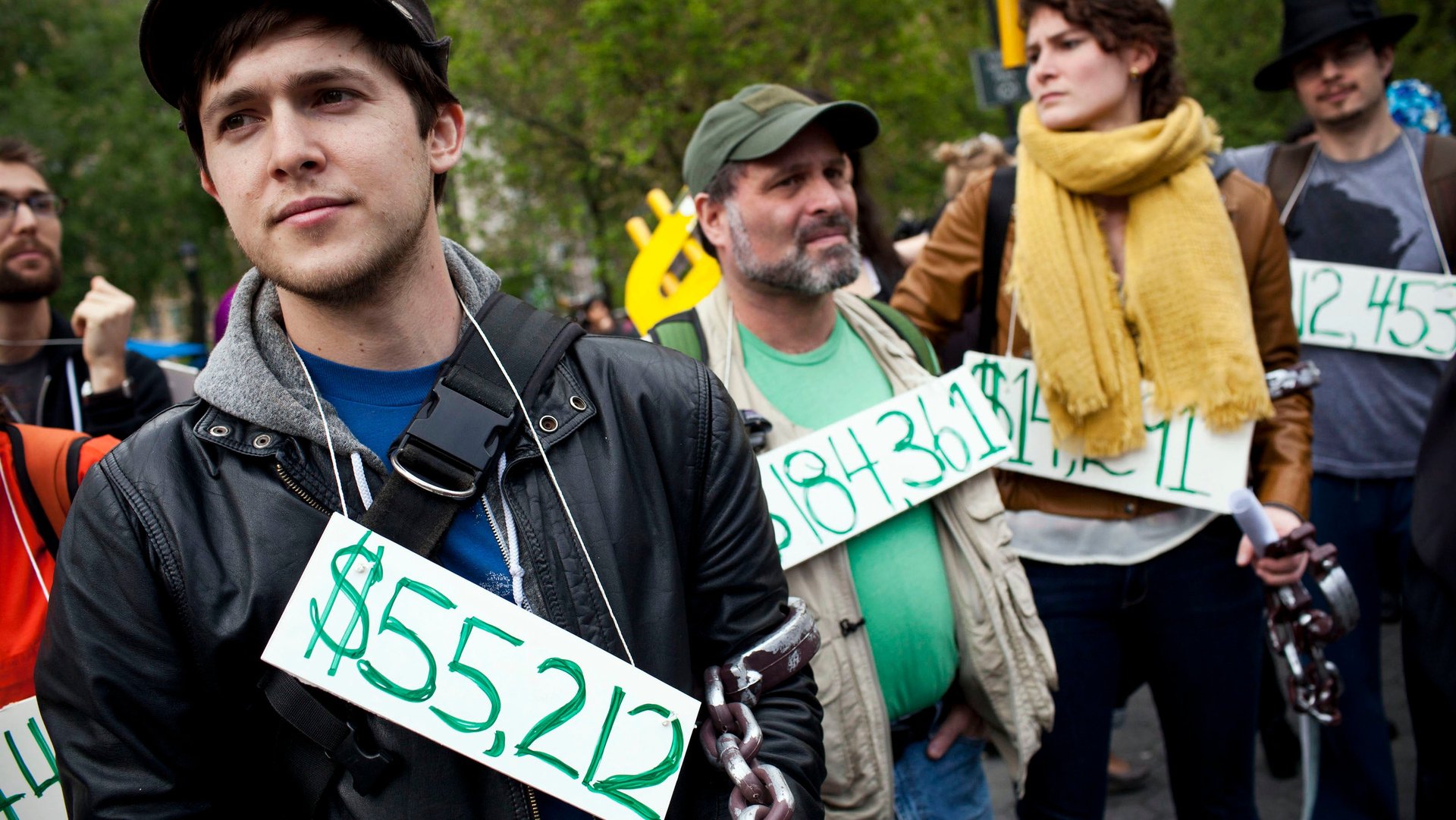The US will forgive over $108 billion in student debt—wildly more than anyone thought
Barack Obama’s expansion of the student-loan repayment program, intended to help curb America’s $1.26 trillion pile of outstanding college debt, is proving a lot more costly.


Barack Obama’s expansion of the student-loan repayment program, intended to help curb America’s $1.26 trillion pile of outstanding college debt, is proving a lot more costly.
In a 100-page report (pdf) released today, the Government Accountability Office said it’d forgive $108 billion in debt for the borrowers of government loans who have fulfilled their obligations under the Obama administration’s income-driven repayment plans. That number is much higher than what the US government originally expected.
Why the discrepancy? Part of it is that the number of borrowers enrolling in the plans has tripled in the last three years, forcing the government to spend more. It said almost 20% of direct-loan borrowers were “delinquent on their loan payments at the end of 2015, and more than a million borrowers defaulted on their loans over the 2015 fiscal year.”
But it’s also, according to the GAO report, the fault of the country’s education department—which forgot to account for inflation when making initial estimates of borrowers’ earnings. “Estimates will continue to change over time, and actual subsidy costs of a loan cohort will not be known until all loans in the cohort have been repaid, which may take 40 years,” the GAO said.
The $108 billion figure also only covers about a third of the total $355 billion owed by the former students enrolled in the plans; the remaining two-thirds haven’t yet met the requirements for debt relief.
But adding a dollop of further uncertainty into the mix is Donald Trump’s recent election; the president-elect—who, after all, started his own for-profit university (a venture that proved thorny in and of itself)—has hinted at instituting stricter policies for loan relief. While Obama’s White House made a point out of looking out for debt-ridden students, even at the government’s cost, Trump’s administration might just reverse that thinking.